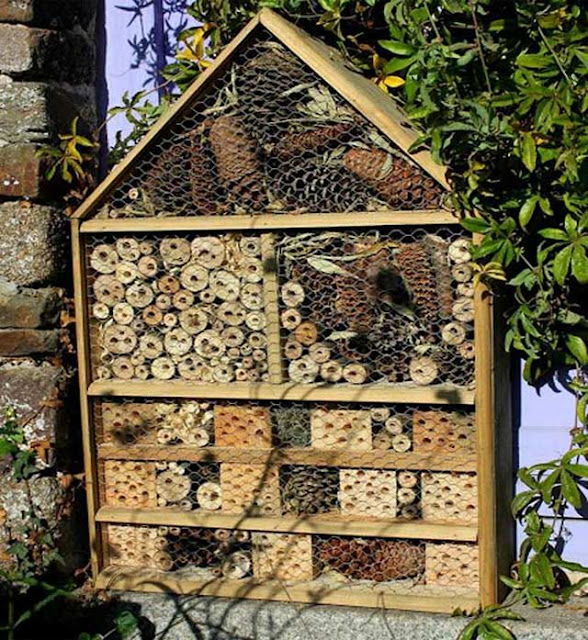Houses for beneficial insects
The role of beneficial insects in garden life is underestimated. And very. Without these bugs, your site would have been destroyed long ago by parasitic insects and no chemistry will help.
Therefore, just as we cultivate roses with love, we must protect and multiply beneficial insects with the same love. They should become useful pets along with the bees. In order to create favorable conditions for them to live, winter and breed, a new direction in landscape design has appeared: houses for beneficial insects.
The hotel for garden insects is an artificially created and useful building and art object, a fashionable and advanced direction of garden creativity, called insect hotels in Europe and America. If you don’t have an apiary nearby, then houses are also built for pollinating insects, such as bumblebees.
Ladybugs, lacewings, ground beetles, hover flies, riders, shield bugs, earwigs and other bugs move to the proposed "apartments" when it gets colder. Therefore, in summer, beetle houses have a purely decorative function.
In winter, the house should be under a layer of snow, otherwise the insects in it may freeze.
There is no single model of the house, but there are certain rules:
- the house needs a roof and walls that will protect its inhabitants from rain, snow and wind;
- do not use coniferous wood and plastic for the frame;
- it is not recommended to use foliage as a filler: a source of fungal diseases, their spores on the paws of the inhabitants of the house can spread throughout the garden;
- the filler must be well fixed so that it does not fall out, does not scatter in the wind;
- it is important to take care of protecting the inhabitants of the house from birds - otherwise we will get not a hotel for insects, but a bird feeder.
It is better to install such a house in a protected, warm place, in a clearing among flowers. Can be placed in the garden at any time, preferably before aphids breed.
What is suitable as a filler?
- Suitable:
- pine or spruce cones
- pruning branches
- straw
- moss
- pieces of tree bark
- hollow dry shoots of plants
- pieces of wood, cuttings of logs with holes drilled in them
- bricks
- ceramic pots
- pebbles
Corrugated cardboard, from which such honeycombs are made:
If there is little food, adult insects can disperse and leave places that are not rich in food. Therefore, special food is sprayed inside the house and on plants for feeding. Therefore, predatory insects will themselves con-generate their numbers depending on the food supply.
A natural question arises: will we not shelter pests?
Any insect can crawl into the house. But here to settle - hardly. Will herbivorous pests be able to share shelter with their enemies - insect predators and parasitic insects? The outcome of such a neighborhood, probably, is still a foregone conclusion ... Predators will win very quickly, why should they give up such a comfortable home to prey victims. The strong will win.








Comments
Post a Comment